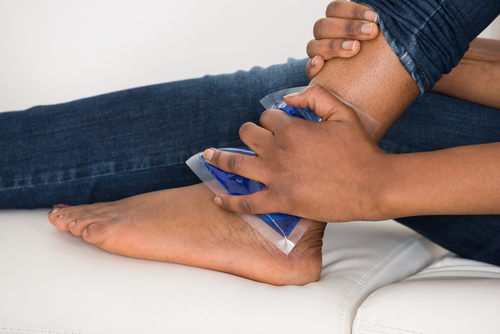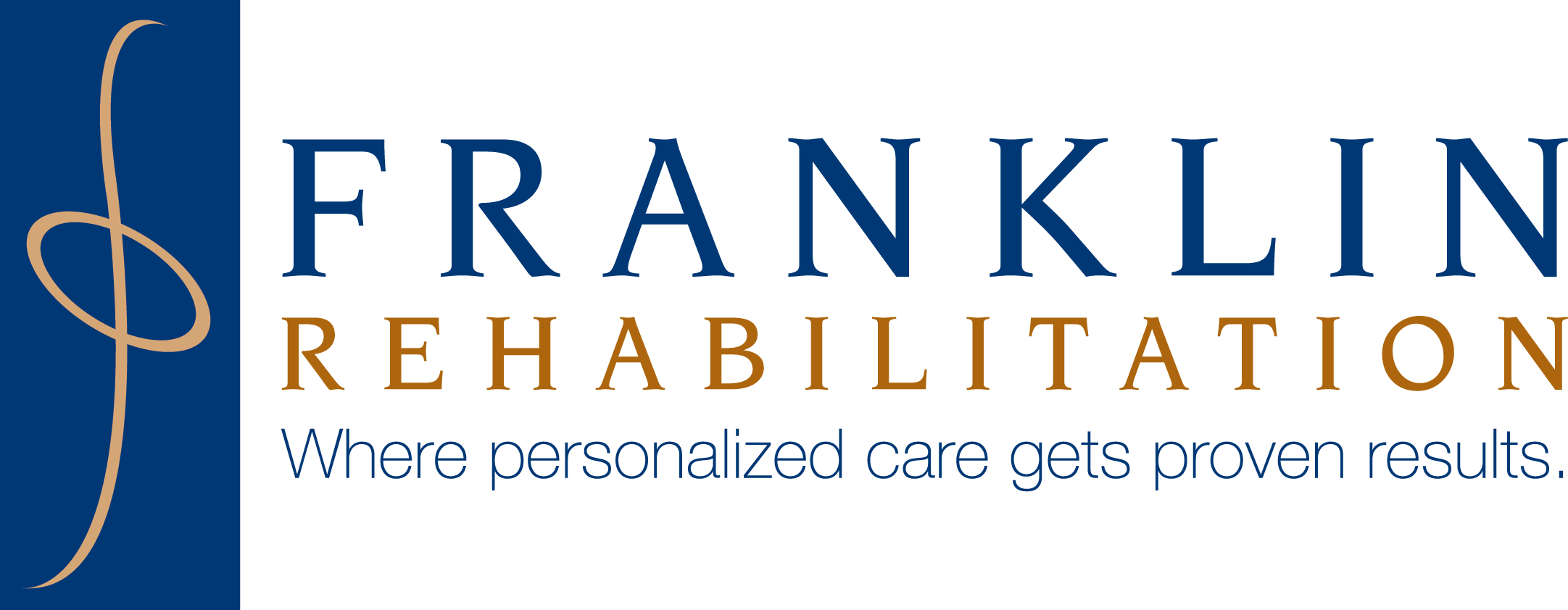How much time does it take to recover from a broken ankle?

Your ankles are essential to your mobility, stability and balance. Their health and function is vital for your overall well-being. They support your body’s weight, help you walk and run, and also absorb shock during physical activities. A broken ankle can have a significant impact on your life, and recovery varies from person to person. Recovery can take a few weeks to several months for the bones to heal, depending on severity and other factors. Regaining complete ankle function could take up to a couple of years for a severe fracture requiring extensive surgery. Physical therapy can help you restore your strength, flexibility, range of motion and function in your broken ankle. Following your physical therapist’s recommendations based on your unique situation can help contribute to a successful recovery and minimize long-term consequences.
Talk to Us Today Discover How We Can Help
What does the recovery process look like for a broken ankle that doesn’t need surgery?
Not all broken ankles need surgery to help them heal correctly. A broken ankle that doesn’t need surgery’s recovery timeline may look like:
- Immediate post-injury — In the initial days after your injury, it’s likely that your ankle will be immobilized with a splint, cast or walking boot. This can help promote healing and reduce pain. It’s essential to keep weight off your ankle and use crutches or a walker for mobility. Keeping weight off can help prevent further damage.
- Two to six weeks post-injury — This period is all about focusing on healing. You’ll want to focus on ways to help reduce swelling, manage your pain and give yourself time to heal. Go to follow-up appointments to monitor your progress. Your treatments may need to be adjusted depending on how you’re healing. You may also begin physical therapy treatments. These may be gentle range-of-motion exercises and non-weight-bearing activities. This is intended to help prevent stiffness and muscle atrophy.
- Six to 12 weeks post-injury — As your healing progresses, you may have weight-bearing activities and walking gradually introduced. This will depend on your healing progress. Physical therapy will shift focus to strengthening exercises. These will focus on your ankle, lower leg and the surrounding muscles to help improve your stability and mobility. Functional activities and balance training may also be incorporated. These will help you regain normal walking patterns and ankle proprioception.
- Three to six months post-injury — By this time, you should be able to see a significant amount of improvement in your ankle function and mobility. Physical therapy may continue to address any lingering weakness, range-of-motion limitations or proprioception issues. You may be able to gradually return to normal activities, sports and weight-bearing activities, depending on your health care provider’s guidance based on your progress.
- Six to 12 months post-injury — Full recovery from a nonsurgical broken ankle can take up to six to 12 months. However, it can vary from person to person. It’s essential to follow all recommended rehabilitation exercises, activity modifications and weight-bearing restrictions as recommended by your health care provider. This can help ensure your optimal healing and reduce your risk for re-injuring your ankle.
What does the recovery process look like for a broken ankle with plate-and-screw surgery?
More complex fractures can require surgical interventions like plates to help the ankle heal correctly. The recovery timeline for a broken ankle with plate-and-screw surgery can vary due to several factors, including how severe the fracture was, the type of surgery you had and your individual healing factors. A general outline of your recovery may look like this:
- Immediate post-surgery — The first days after surgery, you will probably need to keep weight off the affected ankle by using crutches or a walker. Pain management will be your priority. Your health care provider may prescribe pain medications as needed or recommend over-the-counter pain medications. You will want to elevate your ankle and may be directed to apply ice to reduce inflammation.
- Two to six weeks post-surgery — Following your surgeon’s guidelines, you may be allowed to gradually start bearing weight on your ankle and wear a walking boot or brace. You may also start physical therapy. It may focus on gentle range-of-motion exercises, strengthening exercises for the surrounding muscles and balance training.
- Six to 12 weeks post-surgery — As your healing progresses, you may gradually start doing weight-bearing activities and walking without assistive devices. Physical therapy will continue to focus on improving your strength, flexibility and mobility in your ankle and lower leg. You may also incorporate more functional activities and exercises to help you regain your normal gait patterns.
- Three to six months post-surgery — Around this time, you may see a significant improvement in your ankle function and mobility. Physical therapy will help address any lingering issues like weakness or range-of-motion limitations. You may be allowed to start gradually returning to normal activities and sports.
- Six to 12 months post-surgery — Full recovery from ankle surgery with plate and screws can typically happen within six to 12 months. However, it can vary from person to person. It’s essential to follow your rehabilitation exercises and activity restrictions to support your best healing and help prevent re-injury.
Broken ankle recovery tips
Recovering from a broken ankle can be challenging. Some tips that can help boost your healing and improve your overall healing experience can include:
- Follow your health care provider’s instructions — Follow your health care provider’s recommendations about bearing weight on your ankle, using assistive devices, or wearing prescribed splints, casts or boots.
- Elevate and ice — Elevate your broken ankle above your heart level as often as you can. This can help reduce swelling and promote circulation. Using an ice pack several times a day can also help with swelling and alleviate pain.
- Manage pain — Taking pain medication can help manage your discomfort. Over-the-counter pain relievers can be helpful, or your doctor may prescribe stronger pain relievers for more severe pain. It’s important to discuss medications with your health care provider before taking anything new.
- Attend physical therapy — Going to and participating in your physical therapy can help you strengthen muscles, improve your balance, regain your range of motion and improve your overall function in your ankle and lower leg.
- Eat a balanced diet — Eating a nutritious diet full of vitamins, minerals and protein can help support bone healing and tissue repair. Staying hydrated can also help your recovery.
- Use supportive footwear — If recommended, wear supportive shoes or orthotic inserts to help provide stability and reduce stress on your ankle.
Following these tips and guidance from your health care provider can help you on your recovery journey. They will provide guidance and recommendations based on your specific condition and needs.
Physical therapy for broken ankle recovery
Physical therapy can be beneficial in your recovery from a broken ankle whether you need surgery or not. Physical therapy treatments may include:
- Manual therapy — Manual therapy techniques like soft tissue mobilization and joint mobilization can help improve your range of motion, reduce pain and swelling, and boost your overall healing. For soft tissue mobilization, your physical therapist will apply gentle pressure and manipulate the soft tissue around your ankle. They may also use gentle joint mobilization to reduce stiffness and restore normal joint motion.
- Myofascial release — Myofascial release is a manual therapy technique that targets the fascia, the connective tissue that surrounds your muscles and organs. It can help release tension, improve tissue flexibility and improve your overall mobility in your ankle and lower leg.
- Electrical stimulation — Electrical stimulation uses low-level electrical currents passing through your skin by attached electrodes. These electrical currents can help stimulate nerves and release endorphins to help trigger your body’s natural pain-relieving chemicals. It can also help activate and strengthen muscles that may have become weakened due to disuse or immobilization.
Your physical therapy treatment plan will be tailored to your individual needs, goals and progress. The primary objective is to help reduce your pain, improve your range of motion, restore your strength and function, boost your balance and stability, and help you safely return to your daily activities. Your physical therapist will develop your customized plan to help you achieve your optimal outcomes after your broken ankle and will adjust plans as needed.
Franklin Rehab can help you overcome the challenges of a broken ankle
At Franklin Rehabilitation, we pride ourselves on providing compassionate and comprehensive care for our patients. Whether you’re recovering from a broken ankle with or without surgery, our expert team is dedicated to creating and guiding you through a personalized rehabilitation program. We will focus on your specific needs and goals to help you regain strength, mobility and function in your ankle. We strive to help you have a successful recovery and smooth return to your daily activities. You can trust that we are here to support you every step of the way toward healing and improved ankle health.
Call us or request an appointment today for your broken ankle recovery assistance.
Talk to Us Today Discover How We Can Help
